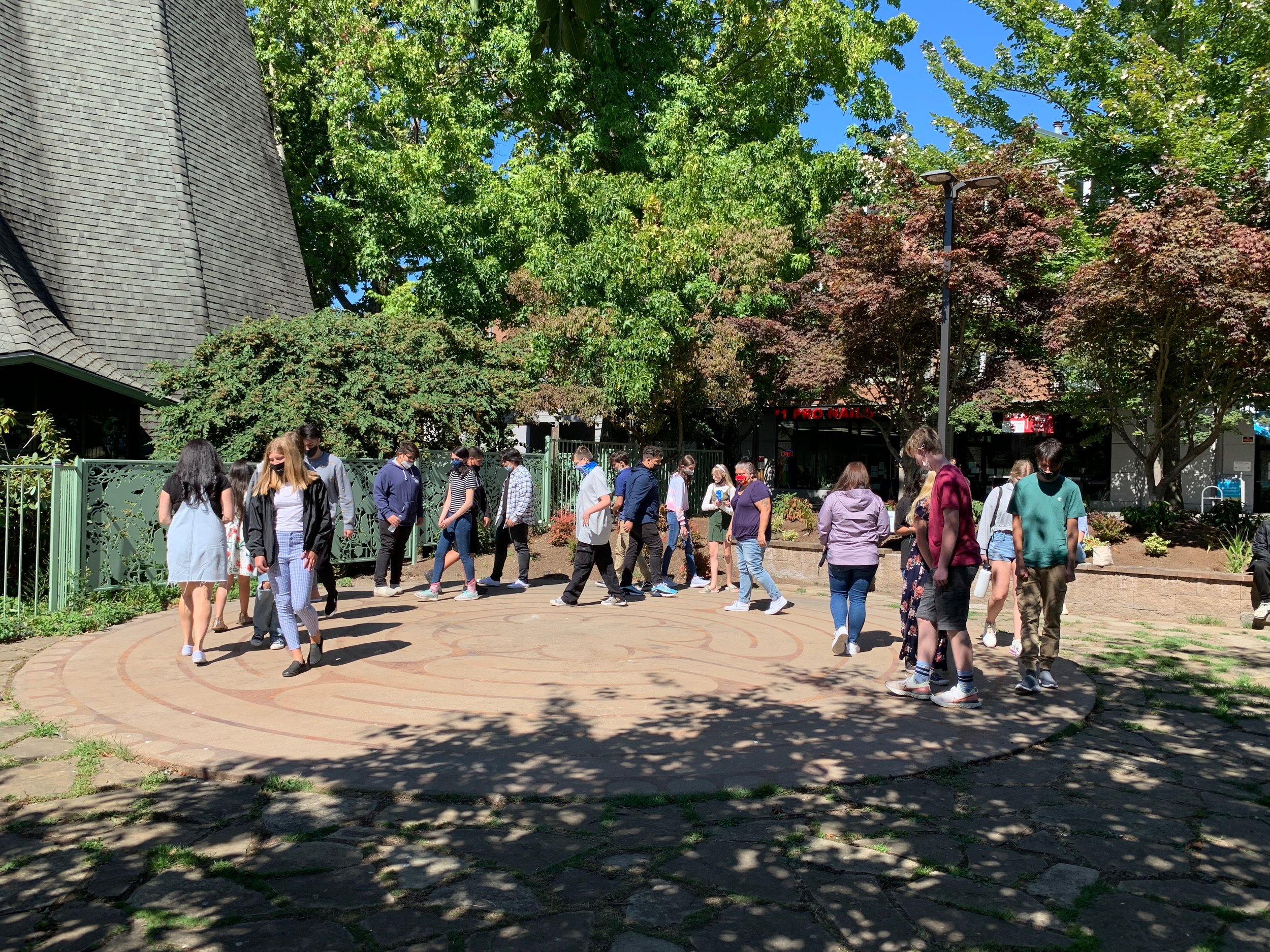Centennial Garden Labyrinth
The Labyrinth
The St. Paul’s Centennial Garden Labyrinth is modeled after the medieval original that was inlaid at Chartres Cathedral, France, in the early 13th century. Created with a sandblasted and stained concrete design, it is the first accessible permanent outdoor labyrinth within the city limits of Seattle.
The sacred geometry of the labyrinth — its complex twists and turns taking us into the center and then out again — invites us into a walking meditation. Unlike a maze, it has no dead ends. The labyrinth offers a way to quiet our minds, open our hearts, pray for our concerns, and turn to God for guidance.
There is no right or wrong way to walk a labyrinth, but it may be undertaken in three parts:
Entering the Labyrinth
A time to release and let go of distraction, perhaps focusing on a special intention or prayer for the walk. Moving at your own pace, you may pass people or others may pass you.
Reaching the Center
A time for openness to the divine Spirit, allowing guidance and inspiration. When you reach the center, remain as long as you wish, receiving what is to be received.
Going Back
A time to retrace steps and return to the world, embracing the Spirit that heals and transforms. With each repetition of the walk, you are being strengthened for growth and change.
St. Paul’s Episcopal Church offers the labyrinth for your prayer, work, and enjoyment. We hope that it will bring insight, peace, and renewal to all who walk it. May God bless you on your journey.
The Garden
The garden, in which the Labyrinth resides, was formerly occupied by a home that later housed the Episcopal Bookstore. That century-old building was demolished in 2003 and the parishioners of St. Paul’s spearheaded a project to create a community green space.
The sunken garden invites visitors to descend toward the labyrinth and feel enveloped in plantings. Ornamental grasses, maples, and low-maintenance, drought-resistance shrubbery soften the perimeter of the stone-paved garden. The splashing stone fountain contrasts the urban sounds of the street corner.
An iron fence wraps around the garden and extends West toward the church entrance. This fence was designed by artist Deborah Mersky in 1998 and is filled with symbolic imagery. These symbols are meant to open the imagination and to invite the viewer to bring their own interpretation to the art.



